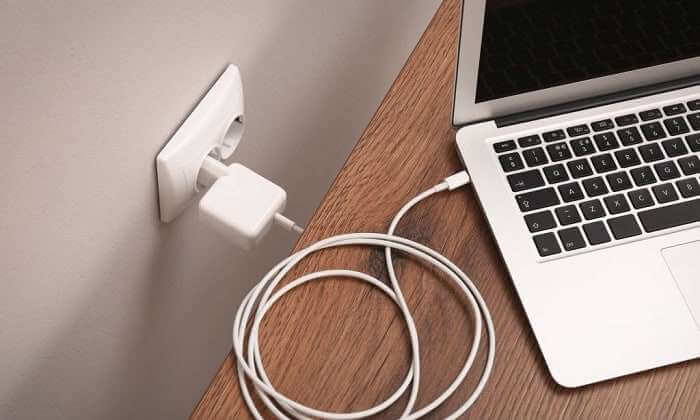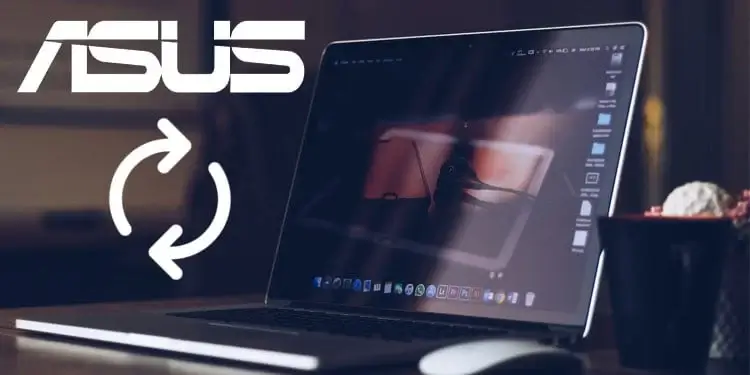Introduction:how many amps does a laptop use
- Explanation of what amps are
- Importance of understanding laptop amp usage
- Brief overview of what the article will cover
As technology continues to evolve, laptops have become an essential tool for both personal and professional use. However, with their increased usage, it’s crucial to understand the amount of power they consume. One way to measure the power consumption of a laptop is by understanding its amp usage.
Amperes, also known as amps, are units used to measure the amount of electric current flowing through a device. In simple terms, amps refer to the number of electrons flowing through a device per second. The higher the amps, the more power a device consumes.
Understanding the amp usage of your laptop is crucial, as it affects the performance and lifespan of your device’s battery. It also helps you determine the appropriate power source needed to charge your laptop. If your laptop draws too much current, it could potentially damage the battery, leading to reduced battery life or even failure.
This comprehensive guide aims to provide a better understanding of how many amps a laptop uses. The article will cover topics such as what amps are, why understanding laptop amp usage is essential, and how to calculate the amp usage of your laptop. Additionally, we’ll explore factors that affect laptop amp usage, such as screen brightness, processor speed, and battery life.
Furthermore, we’ll discuss the different power sources available for laptops, including AC adapters, USB-C chargers, and power banks, and their respective amp ratings. Lastly, we’ll offer tips on how to conserve your laptop’s battery life and reduce its amp usage to improve performance and increase its lifespan.
By the end of this guide, you’ll have a better understanding of how many amps your laptop uses and how to optimize its usage for better performance and longevity.
Understanding Amps and Voltage
- Explanation of amps and voltage
- Difference between amps and voltage
- Basic electrical principles
Before delving into the specifics of how many amps a laptop uses, it’s important to understand the basics of electrical principles. Electricity flows through a device when there’s a voltage difference between two points. Voltage is the measure of the electric potential difference between two points in a circuit. It’s measured in volts (V).
Amperage, on the other hand, refers to the measure of the electric current that flows through a circuit. It’s measured in amperes (A) and is often referred to as amps. Amps represent the quantity of electrons that flow through a circuit per second.
To understand the relationship between amps and voltage, imagine a water pipe. Voltage would be the water pressure, while amps would be the volume of water flowing through the pipe. Just like a water pipe, the higher the voltage, the more current can flow through a circuit.
Basic electrical principles state that the amount of current that flows through a circuit is directly proportional to the voltage and inversely proportional to the resistance of the circuit. The mathematical formula that describes this relationship is known as Ohm’s law, which states that current (I) equals voltage (V) divided by resistance (R), or I = V/R.
Resistance refers to the opposition of a material to the flow of electricity. It’s measured in ohms (Ω) and is influenced by the thickness and length of the conductor, as well as the conductor’s material.
In summary, voltage, amperage, and resistance are the three basic components of electrical circuits. Understanding these components is essential for understanding the amp usage of your laptop.
To measure the amp usage of your laptop, you’ll need to understand the voltage and amperage of the power source being used. Most laptops are designed to work with a specific voltage range, usually between 16V and 20V. It’s crucial to use the appropriate voltage to avoid damaging your device.
The amperage of your laptop will vary depending on the tasks being performed. For example, browsing the internet and typing a document will use less amperage than playing a high-performance video game or running intensive software applications.
To determine the amp usage of your laptop, you can use a tool called a multimeter. A multimeter is an electronic measuring device that can measure various electrical parameters, including voltage and amperage. To measure the amp usage of your laptop, you’ll need to set your multimeter to the amperage setting and connect it in series with your laptop’s power supply. The multimeter will then display the amount of amperage being drawn by your laptop.
It’s essential to note that the amp usage of your laptop is affected by various factors, including the screen brightness, processor speed, and battery life. Higher screen brightness, faster processor speed, and reduced battery life all contribute to higher amp usage. Additionally, the type of activities you’re performing on your laptop will also affect the amp usage.
In conclusion, understanding the basics of electrical principles is crucial for understanding how many amps a laptop uses. Amps represent the amount of electric current flowing through a device per second, while voltage represents the electric potential difference between two points in a circuit. The relationship between voltage, amperage, and resistance is described by Ohm’s law. To determine the amp usage of your laptop, you’ll need to measure the amperage being drawn by your device using a multimeter. Lastly, various factors affect laptop amp usage, including screen brightness, processor speed, and battery life.
How Much Power Does a Laptop Consume?
- Explanation of power consumption
- How to calculate power consumption of a laptop
- Typical power consumption of different types of laptops
- Factors that affect power consumption
Power consumption refers to the amount of energy consumed by a device over a certain period. In the case of laptops, power consumption is measured in watts (W). Understanding the power consumption of your laptop is crucial as it determines the amount of power needed to charge your device and impacts its performance and battery life.
Calculating the power consumption of your laptop requires knowing its voltage and amperage. Once you have these values, you can use the following formula to calculate power consumption:
Power (W) = Voltage (V) x Amperage (A)
For example, if your laptop uses a power supply with a voltage of 19V and draws 3.5A, the power consumption would be:
Power (W) = 19V x 3.5A = 66.5W
This means that your laptop consumes 66.5 watts of power when it’s running.
The typical power consumption of a laptop depends on its type and usage. For example, a high-performance gaming laptop will consume more power than a standard office laptop. Here are the typical power consumption values for different types of laptops:
- Standard office laptop: 20-50W
- Ultrabook: 15-25W
- Gaming laptop: 80-150W
Factors that Affect Power Consumption
There are various factors that affect the power consumption of your laptop. Understanding these factors can help you optimize your device’s usage and prolong its battery life.
- Processor speed: The faster the processor speed, the more power it consumes. If your laptop has a high-performance processor, it will consume more power than a laptop with a slower processor.
- Screen brightness: A brighter screen consumes more power. Adjusting the screen brightness to a lower level can significantly reduce power consumption.
- Battery life: As the battery life decreases, the power consumption of the laptop increases. This is because the laptop is working harder to maintain the same level of performance as the battery depletes.
- Applications and tasks: Running intensive applications or performing high-demand tasks like gaming or video editing will consume more power than basic tasks like web browsing or word processing.
- Wireless connectivity: If your laptop is connected to Wi-Fi or Bluetooth, it will consume more power than when it’s disconnected.
- External devices: Connecting external devices like USB drives, printers, or scanners to your laptop can increase power consumption.
- Power settings: The power settings on your laptop can significantly impact power consumption. Adjusting power settings to a lower performance mode can reduce power consumption.
Reducing Power Consumption
To reduce power consumption and prolong your laptop’s battery life, you can take the following steps:
- Adjust screen brightness: Lowering the screen brightness can significantly reduce power consumption.
- Use power-saving mode: Switching to power-saving mode can reduce power consumption by lowering processor speed and screen brightness.
- Close unnecessary applications: Closing applications that aren’t in use can reduce power consumption.
- Disconnect external devices: Disconnecting external devices like USB drives, printers, or scanners can reduce power consumption.
- Limit Wi-Fi and Bluetooth use: Limiting the use of Wi-Fi and Bluetooth can reduce power consumption.
- Adjust power settings: Adjusting power settings to a lower performance mode can reduce power consumption.
- Replace the battery: If your laptop’s battery is old or worn out, replacing it can significantly improve battery life and reduce power consumption.
Conclusion
Understanding the power consumption of your laptop is essential for optimizing its usage and prolonging its battery life. The power consumption of your laptop depends on its type and usage, with high-performance laptops consuming more power than standard office laptops. Factors that affect power consumption include processor speed, screen brightness, battery life, applications and tasks, wireless connectivity, external devices

How Many Amps Does a Laptop Use?
- Explanation of laptop amperage
- How to calculate laptop amperage
- Typical amperage of different types of laptops
- Factors that affect laptop amperage
The amperage, or current, of a laptop refers to the amount of electrical current flowing through the device. Understanding the amperage of your laptop is important as it impacts the amount of power it consumes and the capacity of the charger required to charge it.
Calculating the amperage of your laptop requires knowing its power consumption and voltage. Once you have these values, you can use the following formula to calculate amperage:
Amperage (A) = Power (W) / Voltage (V)
For example, if your laptop consumes 66.5 watts of power and uses a power supply with a voltage of 19V, the amperage would be:
Amperage (A) = 66.5W / 19V = 3.5A
This means that your laptop draws 3.5 amps of current when it’s running.
The typical amperage of a laptop depends on its type and usage. Here are the typical amperage values for different types of laptops:
- Standard office laptop: 2-3.5A
- Ultrabook: 1.5-2.5A
- Gaming laptop: 6-10A
Factors that Affect Laptop Amperage
POST YOU MAY LIKE:
15 Best Laptops For Medical Billing And Coding In 2023
“OWS Laptop: The Game-Changing Device You’ve Been Waiting For!”
There are several factors that affect the amperage of your laptop, including:
- Processor speed: The faster the processor speed, the more current it draws. If your laptop has a high-performance processor, it will draw more current than a laptop with a slower processor.
- Screen size and resolution: Larger screens with higher resolutions require more current to operate.
- Battery life: As the battery life decreases, the current drawn by the laptop increases. This is because the laptop is working harder to maintain the same level of performance as the battery depletes.
- Applications and tasks: Running intensive applications or performing high-demand tasks like gaming or video editing will draw more current than basic tasks like web browsing or word processing.
- Wireless connectivity: If your laptop is connected to Wi-Fi or Bluetooth, it will draw more current than when it’s disconnected.
- External devices: Connecting external devices like USB drives, printers, or scanners to your laptop can increase the current drawn by the device.
- Power settings: The power settings on your laptop can significantly impact the current drawn. Adjusting power settings to a lower performance mode can reduce the current drawn.
Reducing Laptop Amperage
To reduce the amperage drawn by your laptop, you can take the following steps:
- Lower screen brightness: Lowering the screen brightness can significantly reduce the amperage drawn by your laptop.
- Use power-saving mode: Switching to power-saving mode can reduce the amperage drawn by lowering processor speed and screen brightness.
- Close unnecessary applications: Closing applications that aren’t in use can reduce the amperage drawn by your laptop.
- Disconnect external devices: Disconnecting external devices like USB drives, printers, or scanners can reduce the amperage drawn by your laptop.
- Limit Wi-Fi and Bluetooth use: Limiting the use of Wi-Fi and Bluetooth can reduce the amperage drawn by your laptop.
- Adjust power settings: Adjusting power settings to a lower performance mode can reduce the amperage drawn by your laptop.
- Use a lower-power charger: Using a lower-power charger can reduce the amperage drawn by your laptop when charging. However, it’s important to ensure that the charger has the same voltage as your laptop to prevent damage.
Conclusion
Understanding the amperage of your laptop is important for optimizing its usage and choosing the correct charger for your device. The amperage drawn by your laptop depends on its type and usage, with high-performance laptops drawing more
Can a Laptop Use Too Many Amps?
- Explanation of potential issues with using too many amps
- How to avoid using too many amps
- What to do if a laptop is using too many amps
While it’s important to understand the amperage requirements of your laptop, it’s also important to avoid using too many amps, as this can lead to potential issues.
One potential issue is overheating. If your laptop is drawing too many amps, it can cause the power supply to overheat, potentially damaging the components inside. This can also lead to decreased performance or even complete failure of the laptop.
Another issue is battery life. If your laptop is using too many amps, it can cause the battery to drain faster, reducing its lifespan and requiring more frequent replacements.
To avoid using too many amps, you can take the following steps:
- Use the correct charger: Using the correct charger for your laptop can help ensure that it’s not drawing too many amps. Using a charger with a higher amperage than required can cause the laptop to draw too much current.
- Monitor power usage: Monitoring your laptop’s power usage can help you identify when it’s drawing too many amps. You can use software tools to monitor the power usage and adjust the settings accordingly.
- Adjust power settings: Adjusting your laptop’s power settings can help reduce the amperage drawn. Switching to power-saving mode, reducing screen brightness, and closing unnecessary applications can all help reduce power usage.
- Disconnect external devices: Disconnecting external devices can also help reduce the amperage drawn by your laptop. External devices like USB drives, printers, or scanners can increase the current drawn by the laptop.
If your laptop is already drawing too many amps, there are a few things you can do to address the issue:
- Check the charger: If your laptop is drawing too many amps, check the charger to ensure that it’s the correct one for your laptop. If it’s not, switch to a charger with the correct amperage.
- Replace the battery: If the battery is old or damaged, it may be drawing too many amps. Replacing the battery can help address the issue.
- Check for malware: Malware can cause your laptop to work harder, drawing more power than necessary. Running a malware scan can help identify and remove any malware.
- Check for software issues: Software issues can also cause your laptop to draw too many amps. Updating software or reinstalling it can help address the issue.
In conclusion, using too many amps can lead to potential issues with your laptop, including overheating and decreased battery life. To avoid using too many amps, use the correct charger, monitor power usage, adjust power settings, and disconnect external devices. If your laptop is already drawing too many amps, check the charger, replace the battery, check for malware, or address any software issues.
FAQs
- What is the difference between amps and watts?
- What happens if I use the wrong charger for my laptop?
- Can I use a higher amp charger for my laptop?
- Can I use a lower amp charger for my laptop?
- What are the consequences of using the wrong charger for my laptop?
- What are some common reasons for a laptop to use too many amps?
- How can I conserve power on my laptop?
- How does laptop amperage affect battery life?
Amps and watts are both units used to measure electrical power, but they measure different things. Amps measure the current flowing through a circuit, while watts measure the amount of power being consumed by the circuit. In other words, amps measure the rate of flow of electrons in a circuit, while watts measure the amount of work being done by the electrons.
- What happens if I use the wrong charger for my laptop?
Using the wrong charger for your laptop can lead to several issues. If the charger provides too little power, your laptop may not be able to charge properly or may even drain the battery while in use. If the charger provides too much power, it can cause the laptop to overheat or even damage the components inside.
- Can I use a higher amp charger for my laptop?
In general, it’s not recommended to use a higher amp charger for your laptop than what is specified by the manufacturer. While it may charge your laptop faster, it can cause the laptop to draw too much current, potentially leading to overheating or other issues. However, if the voltage and polarity are the same, you can use a charger with a higher wattage rating than required, as long as the amperage is not significantly higher.
- Can I use a lower amp charger for my laptop?
It’s not recommended to use a lower amp charger for your laptop than what is specified by the manufacturer. Using a charger with too little amperage can cause your laptop to not charge properly or even drain the battery while in use.
- What are the consequences of using the wrong charger for my laptop?
Using the wrong charger for your laptop can lead to several issues, including:
- Overheating: A charger that provides too much power can cause your laptop to overheat, potentially damaging the components inside.
- Battery drain: A charger that provides too little power can cause your laptop to drain the battery while in use.
- Reduced performance: Using a charger that doesn’t provide enough power can cause your laptop to run slower or not work properly.
- What are some common reasons for a laptop to use too many amps?
Some common reasons for a laptop to use too many amps include:
- Using a charger with the wrong amperage
- Running resource-intensive applications or tasks
- Running too many applications at once
- Using external devices that draw too much power
- Malware or other software issues
- How can I conserve power on my laptop?
There are several ways to conserve power on your laptop, including:
- Adjusting power settings: Switch to power-saving mode, reduce screen brightness, and close unnecessary applications to reduce power usage.
- Disconnecting external devices: Disconnect external devices like USB drives, printers, or scanners to reduce power usage.
- Using energy-efficient hardware: Choose energy-efficient hardware like solid-state drives (SSDs) instead of hard disk drives (HDDs).
- Updating software: Keep your software up to date to ensure that it’s using power efficiently.
- Replacing the battery: If your battery is old or damaged, it may be drawing too much power. Replacing it can help improve battery life.
- How does laptop amperage affect battery life?
Laptop amperage can affect battery life in several ways. If your laptop is using too many amps, it can cause the battery to drain faster, reducing its lifespan and requiring more frequent replacements. Additionally, using a charger with too much amperage can cause the battery to degrade more quickly, leading to shorter overall battery life. It’s important to use the correct charger and monitor power usage to ensure that your laptop is not drawing too many amps and causing undue strain on the battery.
Conclusion
- Summary of key takeaways from the article
- Importance of understanding laptop amperage
- Encouragement to share the article with others who may find it helpful
In conclusion, understanding the amperage of your laptop is important for ensuring that it’s running properly and not drawing too much power. By calculating the amperage and understanding the typical usage for different types of laptops, you can make informed decisions about which charger to use and how to conserve power. Additionally, avoiding the use of too many amps can help prevent overheating and damage to your laptop’s components, as well as extend the lifespan of your battery.
Key takeaways from this article include:
- Amps measure the current flowing through a circuit, while watts measure the amount of power being consumed by the circuit.
- Using the wrong charger for your laptop can cause overheating, battery drain, and reduced performance.
- Laptop amperage can affect battery life by causing the battery to drain faster and degrade more quickly.
- You can conserve power on your laptop by adjusting power settings, disconnecting external devices, using energy-efficient hardware, updating software, and replacing the battery if necessary.


